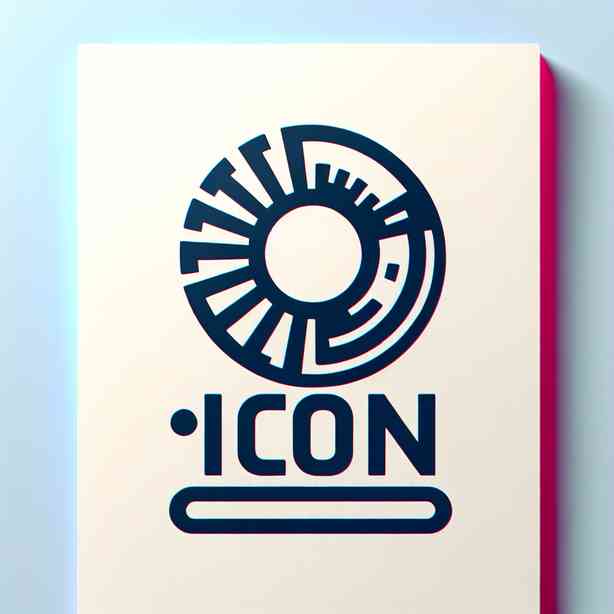
In the digital landscape of today, where user experience is key to retaining visitors and converting them into customers, loading times hold paramount importance. Every pixel on a website has a role to play, yet there exists one universal truth: the loading sequence of these elements can significantly impact how users perceive and interact with a site. Among these elements, there often exists a particular icon that appears to be the last to load, serving as an unintentional but notable aspect of a user’s journey. Understanding the behavior of this icon and its implications can help in optimizing the web experience for users.
The first point we should consider is the nature of the loading icon itself. Typically, this icon serves a crucial function, indicating that the website is processing a request or fetching data. It could take the form of a spinner, a progress bar, or even a simple loading graphic. Regardless of its design, the primary role remains the same: to communicate to users that their request is being handled. However, if this icon consistently loads last, it can lead to frustration. Users may begin to associate a slow-loading icon with a slow website, impacting their overall satisfaction and willingness to stay on the page. This could result in higher bounce rates, as visitors often leave when they encounter frustration during their browsing experience.
There are various reasons why this loading icon may take longer than expected to display or complete its loading phase. One common culprit is the heavy reliance on JavaScript. Many modern web applications depend on JavaScript to render dynamic content and handle user interactions. While JavaScript can enhance the user experience by making pages interactive, it can also lead to longer loading times if not managed properly. If the scripts that control the loading icon are not optimized or prioritized correctly, users may find themselves staring at a blank screen or experiencing an unresponsive site. This highlights the importance of efficient script loading strategies, such as deferring or asynchronously loading non-essential scripts, to prevent delays in rendering crucial visual elements.
Another aspect to consider is the server response time. If a website is connected to a database that takes time to respond, the loading icon may be the last item to render while waiting for data. Users may perceive this delay as a lack of responsiveness, and if the loading icon appears after a longer than acceptable wait, that frustration can mount. To mitigate this, site owners must ensure that their servers are adequately optimized and that queries to databases are efficient. Employing caching strategies can also help by storing frequently accessed data so that it doesn’t require additional database hits every time a user requests that information.
Moreover, the impact of image and media loading cannot be overlooked. Large media files, such as high-resolution images or videos, can create bottlenecks in the loading process. When a website has not optimized its media assets appropriately, these elements might hold up the rendering of other components, including the loading icon. Therefore, implementing compression techniques, utilizing next-gen formats, and employing lazy loading can help in enhancing performance. By ensuring that images load only when required, we not only provide a smoother experience but also reduce the chances of the loading icon being the last element to appear on the user’s screen.
Furthermore, we need to acknowledge the effect of third-party integrations. Many websites rely on additional services such as analytics, ad networks, and social media widgets. While these can provide valuable functionality and insights, they can also slow down the loading process significantly if they are not managed properly. For example, if a web page calls multiple third-party scripts that delay the loading icon, it may lead to a poor user experience. In such cases, it’s essential to carefully assess which third-party services are necessary and which can be postponed or removed entirely.
From a user-centered design perspective, it is vital to remember that expectations play a significant role in how users perceive performance. If a website is slow, users often assume it’s not functioning correctly, leading to potential abandonment. This is where effective communication becomes crucial. By incorporating informative loading animations or messages that indicate the progress of loading, user expectations can be better managed. Users are less likely to abandon a page if they feel informed about what is happening rather than left wondering whether or not something is broken.
We must also recognize that mobile users can have different expectations when it comes to loading times. Given that mobile networks can be inconsistent and slower compared to wired connections, the last loading icon can be particularly detrimental to the mobile experience. Optimizing for mobile devices is crucial in today’s digital age, where more users access websites via smartphones and tablets. A mobile-first design strategy that prioritizes performance can make a significant difference in ensuring that loading icons do not negatively impact the perceived speed of a mobile site.
In conclusion, the last-loading icon illustrates a broader theme within web development and user experience: the cumulative impact of various performance elements on user perception. By focusing on optimizing script loading, enhancing server response times, managing media files, curating third-party integrations, and clearly communicating with users, web developers and designers have the power to create an engaging experience that minimizes frustration. Every element of a website contributes to the overall experience, and by paying attention to details such as loading icons, we can improve user interactions significantly. Therefore, it’s worth investing time in refining these aspects to foster a more consistent and satisfactory online journey for all users.


